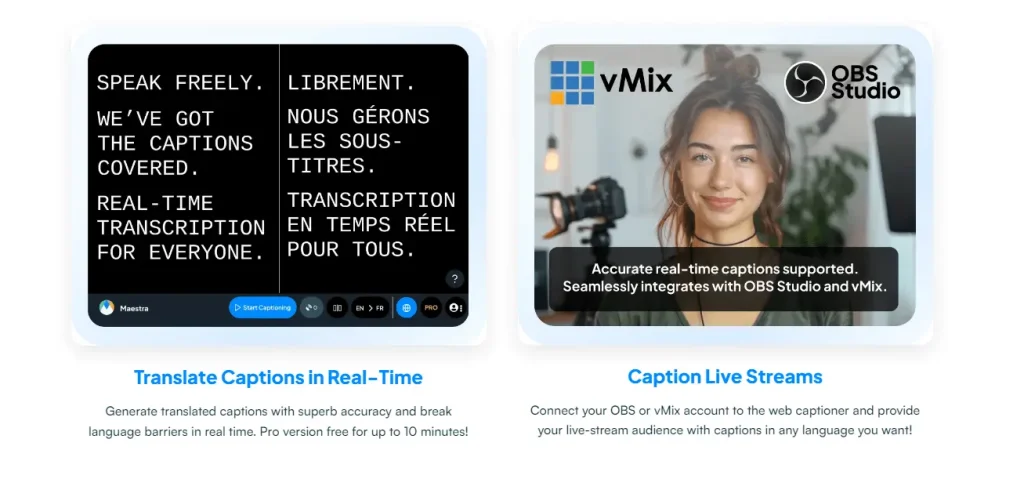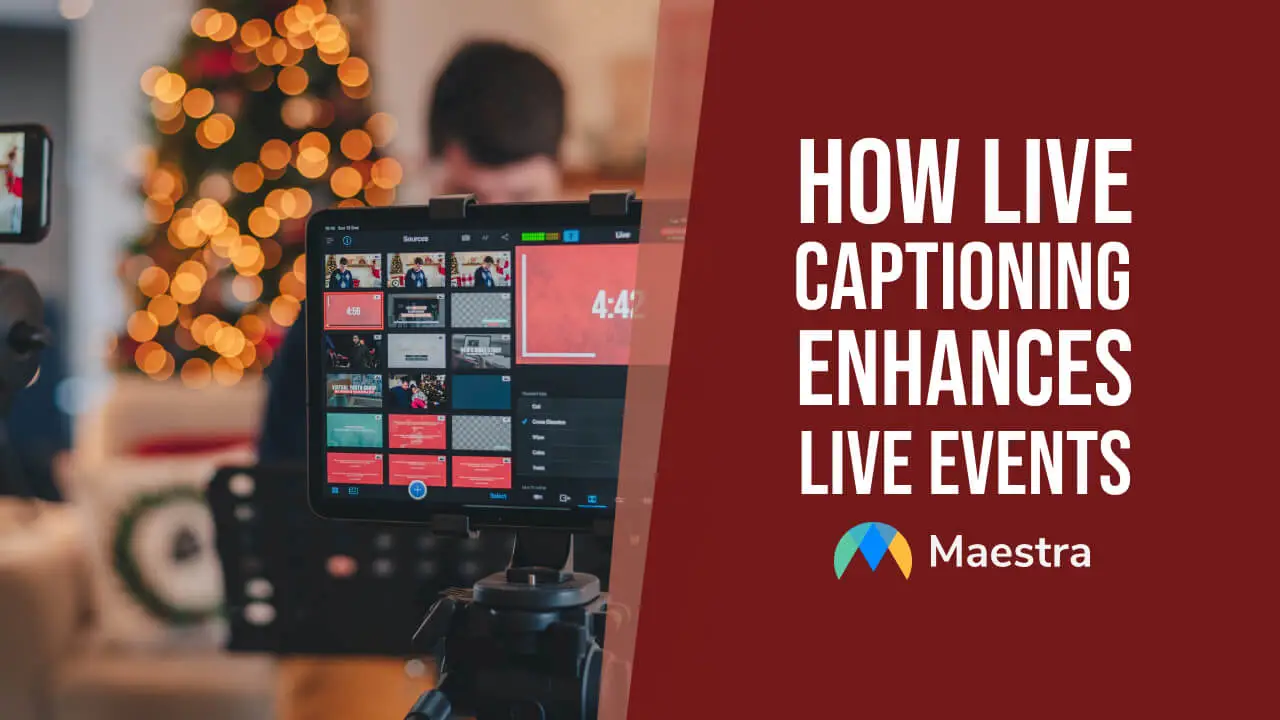How to Translate in Real-Time?

Language barriers can make communication challenging, but technology has taken great strides in bridging the gap. Real-time voice translation has emerged as a powerful solution for connecting people across different languages, whether in business meetings, travel, or education. With advancements in AI, translating voices in real-time is now more accurate and accessible than ever before.
The State of AI Live Translation in 2025
AI translation has significantly advanced in speed, accuracy, and language support, making real-time voice translation more practical for global communication.
Tools like Maestra AI and Google Translate now handle accents, dialects, and context more effectively. While challenges like translating idioms and cultural nuances remain, the 2025 landscape shows a clear trend toward seamless multilingual interactions.
How to Translate Speech in Real-Time

The simplest method to translate in real-time is through AI captioning. You do not have to figure out how to use the app, you simply:
- Start it up.
- Enable live translation.
- Choose languages.
- Start translating in real time.
Translate Speech in Real-Time
The translation will appear on the app in the form of captions. Aside from live captioning & translation, Maestra has a free live transcription tool, allowing anyone to transcribe audio in real-time, completely for free.
Another method of live speech translation is through the Chrome extension. Once you download the extension and sign in to your Maestra account, all you have to do is choose languages and start it up. The extension will capture Chrome tab audio to transcribe & translate it in real-time, with a 10-minute trial period.
Benefits of Live Translation
As AI technology progresses, we welcome new ways of communication and breaking language barriers. Translating a conversation in real-time with a real time translator can be used to our advantage, in many ways than one.
1. Business Meetings and Conferences

- Use Case: Multinational teams and global conferences benefit from instant language translation, enabling seamless communication among participants.
- Benefit: Reduces language barriers, fostering collaboration and efficiency in decision-making.
2. Education and E-Learning
- Use Case: Live translation helps universities, online courses, and training programs cater to diverse linguistic audiences.
- Benefit: Expands accessibility, allowing students worldwide to engage with content in their preferred language.
3. Media and Entertainment
- Use Case: Live translation is used in broadcasting, streaming events, and live shows to provide subtitles or audio in multiple languages.
- Benefit: Increases audience reach and inclusivity, making content available globally.
4. Healthcare Communication
- Use Case: Hospitals and clinics use live translation for patient consultations with non-native speakers.
- Benefit: Enhances patient care and reduces the risk of miscommunication.
5. Travel and Tourism

- Use Case: Tour guides and travel agencies leverage live translation to communicate with international clients.
- Benefit: Improves customer experience by offering personalized services in multiple languages.
Different Ways to Translate a Conversation in Real-Time
1. Using AI-Powered Apps and Tools

AI apps offer user-friendly solutions for real-time voice translation. These tools typically convert spoken words into text, translate them instantly, and then render the translation back as speech. Maestra AI, for instance, provides tools that allow users to experience seamless audio translation, supporting over 125 languages. Similarly, tools like Google Translate and iTranslate cater to everyday users for travel or casual conversations.
2. Dedicated Translation Devices
For those who prefer hardware solutions, portable translation devices provide high-quality results. Devices like Pocketalk or Travis Touch are equipped with powerful processors and language databases. They’re especially useful in environments with limited internet connectivity, offering offline translation features.
3. Web-Based Live Translation Services
Real-time translation has also become integral to online meetings, webinars, and video calls. Platforms like Zoom and Microsoft Teams now incorporate translation services to support multilingual audiences. Maestra AI stands out with its live translation and captioning capabilities, making it ideal for professional settings.
4. The Role of Human Translators in Real-Time Settings
While AI is a game-changer, human translators remain indispensable in certain scenarios, such as legal proceedings or cultural events where nuance is critical. In many cases, AI tools and human interpreters complement each other for optimal results.
Challenges and Opportunities in Real-Time Translation
Real-time translation faces a few challenges, such as processing regional accents or maintaining accuracy in complex conversations. Moreover, translating idiomatic expressions or culturally specific phrases still requires improvement.
However, the opportunities are vast. AI translation can transform industries like healthcare, where multilingual communication is critical, or entertainment, where global audiences demand localized content. With tools like Maestra AI leading the way, the potential for innovation is limitless.
Frequently Asked Questions
Is it possible to translate in real time?
Yes, other than live text translation tools such as Google and DeepL, Maestra can translate any audio in real-time, displaying the translation as captions. You can try it for free, for up to 10 minutes.
Can you translate a conversation in real-time?
Yes, you can capture any audio using Maestra’s web captioner app or the live translation extension, allowing you to translate speech in real-time in over 125 languages.
How do you translate a speech in real-time?
Start up the web captioner app, choose the original and target languages and start capturing the audio. The translation will be displayed as captions as speech happens.
How do you translate an entire conversation?
Start Maestra’s web captioner app and enable live translation. Choose the languages and start capturing the conversation to translate it in real-time. As you speak, captions will flow in both the original and target languages.

